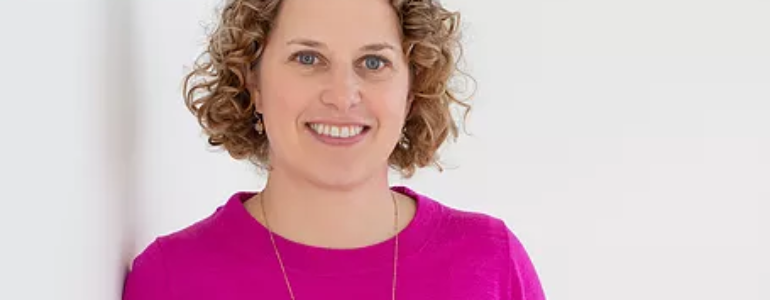By: Molly Ness PHD
Recently, my fourth-grade daughter and I were at our local recycling center, dropping off aluminum cans and plastic milk gallons. As we broke down our cardboard, we noticed an enormous stack of virtually brand-new children’s books. As I shook my head in frustration, my daughter asked me what was wrong.
“These books belong in the hands of young readers, or in a classroom library – not on the top of a recycling pile,” I explained. “Did you know that some children don’t have books in their homes or schools?”, I continued. Fortunate to grow up in a home and area rich with books and in a family of lifelong readers, this concept was incomprehensible to her. She furrowed her brow, “I don’t get it. How can kids not have books? How are they gonna read?”
Her simple question was our impetus to launch a community book drive. With a few social media posts, some flip-lid trash cans, and many cardboard boxes, my daughter and I have collected nearly 4,000 books for Title I schools in our area. My daughter has become a young literacy activist, high schoolers (in need of fulfilling their required community service hours) box and distribute books, and we’ve made our community aware about our collective responsibility to take action in addressing book deserts.
The Devastating Impact of Book Deserts
Today, over 32 million children lack book access in their homes, schools, and communities. These students live in book deserts – high-poverty geographic areas that lack reading material. Recent research shows significant disparities in the availability of books between high-income and low-income neighborhoods, even within the same city; in a high-poverty area of Washington, DC (with poverty levels above 60%) there is one book per 833 children (Neuman & Moland, 2019).
When books are not readily available, children suffer. As Neuman and colleagues (2019) explain, book deserts constrain young children’s opportunities to start school ready to learn. Without books, children miss out on chances to acquire vocabulary, content knowledge, and a myriad of literacy skills. Furthermore, without books children miss out on the vast socioemotional benefits that comes from adult-child reading interaction.
How You Can Help #endbookdeserts
Whether you are a teacher living in an area flooded with books or you teach in a community that qualifies as a book desert, you can join forces with literacy warriors who aim to provide book access and equity. Here are just a few ideas on how to flood students with books:
- Seek Out & Visit Literacy-Rich Areas in Your Communities: Innovative people and programs – beyond our public libraries – are transforming community spaces into literacy hot spots. For example, laundromats are quickly becoming makeshift literacy spaces – as patrons tend to frequent the same laundromats, bring their young children, and spend an extended amount of time there. Embracing literacy as a keystone to healthy child development, Reach Out and Read provides families with books as a part of pediatric checkups. Book banks are gaining momentum, as epitomized by Bernie’s Book Bank in Chicago, and San Francisco’s Children’s Book Project, and Baltimore-based Maryland Book Bank.
- Get Creative Passionate literacy warriors who get books into the hands of their students don’t rest on school vacations or summer breaks and prove that where there’s a will, there’s a way. Teachers in Virginia ride bikes into students’ neighborhoods over the summer, armed with popsicles and books. In Michigan, teachers repurposed a dilapidated school bus into the Big Rockin’ Book Bus; throughout the summer, they deliver meals and books directly to students.
- Send Home Books From Your Classroom and / or School Libraries: Knowing that students might not have books at home, we need to be generous with the resources that we do have. Don’t lock away books in classroom and school libraries during school breaks and summer holidays. Don’t be afraid that some books might not make their way back to classroom shelves. Literacy guru Donalyn Miller says, “I’d rather lose a book than lose a reader.”
- Spread Book Culture: Overcoming book deserts takes more than just placing books in low-income areas. Create book culture by inviting authors to discuss their craft, develop welcoming spaces to discuss books, and constantly talk to and with students about what you are reading to showcase your reading identity. You might foster the reading habits of readers of all ages with cross-community virtual book clubs. In effort to promote a love of reading, ProjectLit provides high-quality, student-selected books worthy of discussion.
- Raise awareness to #EndBookDeserts: Many people outside of the field of education are simply unaware of the presence and impact of book deserts. You might work with local businesses, churches, and organizations to understand the challenge and inspire them to take action and begin a book collection, to help a teacher fulfill her Amazon wish list for classroom books, or donate their time to the many organizations that exist to distribute books.
Ultimately, all of us must champion children’s literacy rights, and be vocal advocates for the importance of book access. As we shine the light on the accessibility of books in our low-income urban and rural areas, we increase our ability to transform book deserts into book oases. When teachers come together – across both book deserts and book floods – all children increase the likelihood of becoming lifelong readers. For more information on the people and programs who work to end book deserts, visit www.endbookdeserts.com.
References:
Neuman, S. & Moland, N. (2019). Book deserts: The consequences of income segregation on children’s access to print. Urban Education, 54(1), 126-147.
Check out Molly’s Website!
![]()













